Black Men Fade Haircut
The fade haircut has revolutionized men’s grooming, particularly for Black men whose unique hair texture creates stunning dimensional effects. From barbershops in Harlem to Hollywood red carpets, the fade has become the ultimate expression of masculine sophistication and cultural pride.
Black men’s hair offers unparalleled versatility for fade techniques, allowing for crisp lines, smooth transitions, and creative patterns that simply aren’t possible with other hair textures. The natural curl pattern creates depth and dimension that makes every fade unique, turning each haircut into a personalized work of art.
Modern fade haircuts for Black men represent more than just grooming – they’re a statement of identity, professionalism, and style consciousness. Whether you’re heading to a corporate boardroom or a weekend barbecue, the right fade communicates confidence, attention to detail, and cultural awareness.
The Science Behind Perfect Fade Techniques for Textured Hair 🧬

Professional barbers use graduated clipper sizes, typically starting with a #0 or #1 guard at the bottom and gradually increasing to #3 or #4 at the blend line. The key lies in the seamless transition between lengths, creating that signature “fade” effect that appears to melt from one length to another.
Temperature and humidity significantly affect textured hair, making timing crucial during the cutting process. Expert barbers work quickly but precisely, understanding that Black hair can change shape and volume as it dries, requiring constant adjustment and refinement throughout the cutting process.
The direction of hair growth varies significantly across different areas of the head, particularly around the crown and nape areas. Master barbers map these growth patterns before beginning any fade, ensuring the final result flows naturally with the hair’s inherent characteristics rather than fighting against them.
Low Fade Mastery: Subtle Sophistication for Professional Settings 💼

The low fade begins just above the ear and creates a gradual transition that’s perfect for conservative workplace environments. This style maintains maximum hair length on top while providing clean, polished sides that project professionalism and attention to detail.
Corporate executives and business professionals gravitate toward low fades because they offer versatility in styling options. The substantial length on top can be styled sleek for formal meetings or textured for casual Friday, making it the ultimate chameleon haircut for dynamic professional lives.
Maintenance requirements for low fades are relatively minimal, typically requiring touch-ups every 2-3 weeks. This makes them ideal for busy professionals who want to maintain a sharp appearance without frequent barbershop visits, maximizing both style and practicality.
The low fade works exceptionally well with various hair textures, from loose curls to tight coils. Barbers can customize the fade height and blend intensity to complement individual face shapes and personal style preferences, ensuring each client receives a truly personalized result.
Mid Fade Excellence: The Perfect Balance of Edge and Elegance ⚖️
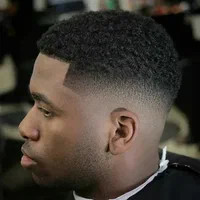
The mid fade creates an elongating effect that’s particularly flattering for men with round or square face shapes. The strategic placement of the fade line draws attention upward, creating the illusion of added height and refined facial proportions.
Styling versatility reaches its peak with mid fades, as the moderate length on top accommodates everything from slicked-back formal styles to textured, voluminous casual looks. This adaptability makes it a favorite among men who transition between different social and professional environments throughout their week.
Creative opportunities abound with mid fades, as the positioned blend line provides an excellent canvas for line work, patterns, and design elements. Skilled barbers can incorporate subtle details that add personality while maintaining the haircut’s fundamental sophistication and wearability.
High Fade Boldness: Making Statement Cuts That Command Attention 🚀

The high fade creates maximum contrast by beginning the blend near the temples, leaving substantial length only on the very top of the head. This dramatic approach makes a powerful style statement that exudes confidence and contemporary edge.
Athletic professionals and creative industries embrace high fades for their bold, modern aesthetic. The clean sides highlight facial features while the concentrated volume on top creates striking silhouettes that photograph beautifully and maintain their shape throughout active lifestyles.
Precision becomes paramount with high fades, as any imperfections in the blend line are immediately visible. This demanding technique requires master-level barbering skills and regular maintenance every 1-2 weeks to preserve the sharp, clean appearance that makes high fades so impactful.
The high fade serves as the foundation for many trending styles, including textured crops, pompadours, and geometric designs. Its versatility as a base cut allows for seasonal style changes and experimental looks while maintaining the fundamental structure that defines the fade family.
Skin Fade Perfection: Ultra-Clean Cuts for Maximum Impact 🔪
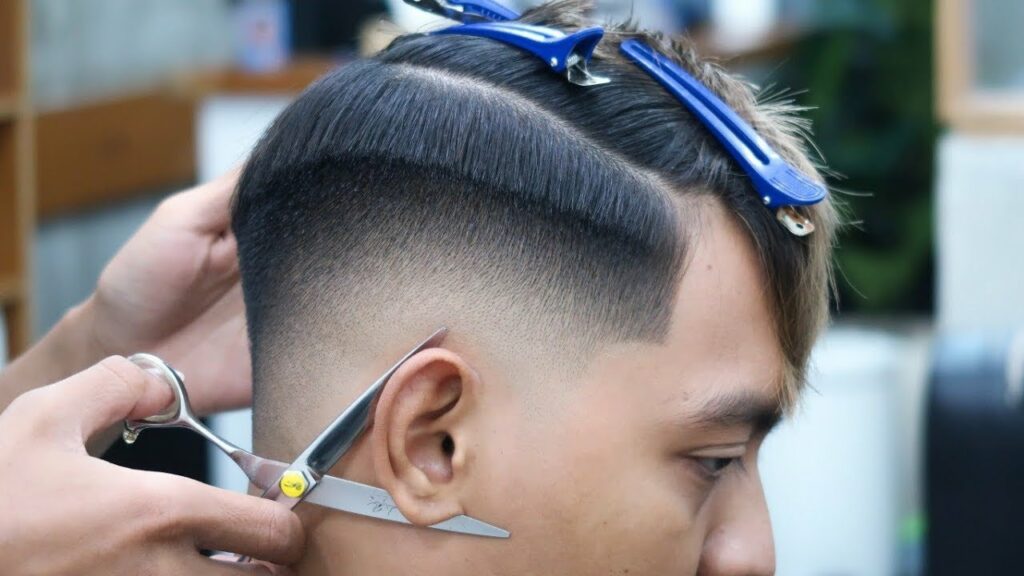
The skin fade, also known as a bald fade, creates the most dramatic transition possible by blending the hair down to the actual skin. This ultra-clean approach delivers maximum contrast and creates striking visual impact that’s impossible to ignore.
Professional athletes and entertainers favor skin fades for their camera-ready appearance and bold aesthetic. The seamless transition from hair to skin requires exceptional skill and creates a look that appears effortlessly cool while demanding significant technical expertise to execute properly.
Maintenance intensity reaches its peak with skin fades, typically requiring professional touch-ups every 7-10 days to maintain the pristine appearance. This commitment to regular grooming reflects a dedication to personal presentation that communicates serious attention to detail and style consciousness.
The skin fade provides the ultimate blank canvas for creative expression, allowing barbers to incorporate intricate line work, patterns, and artistic elements. From simple geometric shapes to complex cultural symbols, the contrast between hair and skin creates stunning visual effects that transform haircuts into wearable art.
Burst Fade Innovation: Curved Cuts That Follow Natural Head Shape 🌟
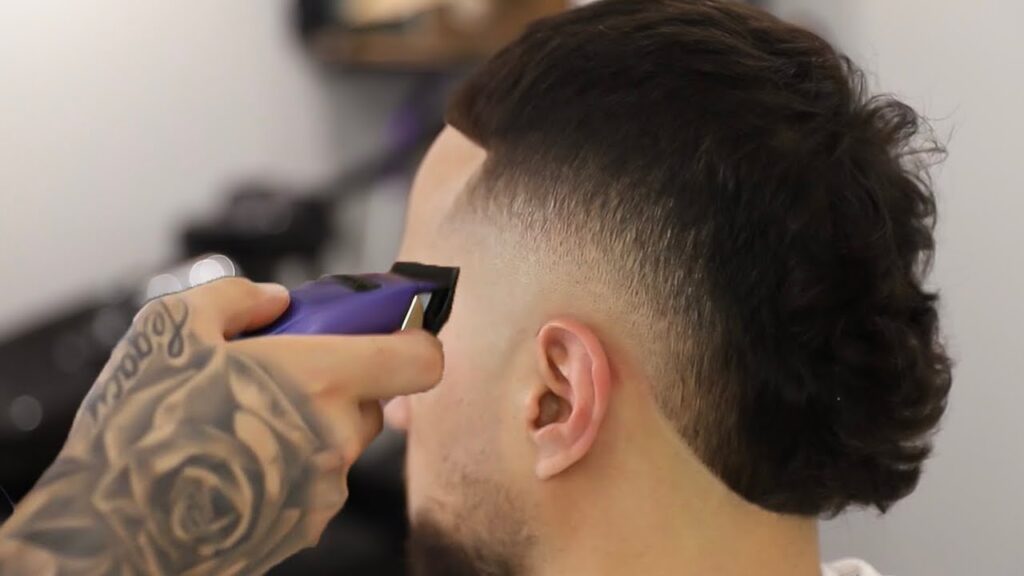
The burst fade follows the natural curve around the ear, creating an arc-like pattern that enhances the head’s natural shape. This innovative technique offers a fresh alternative to traditional straight-line fades while maintaining professional appropriateness.
The curved nature of burst fades creates a softer, more organic appearance that complements round and oval face shapes particularly well. The flowing lines add movement and visual interest while avoiding the sometimes harsh geometry of traditional fade patterns.
Barbers appreciate burst fades for their technical challenge and creative potential. The curved cutting pattern requires advanced skill and artistic vision, making each burst fade a showcase of the barber’s expertise and the client’s willingness to embrace contemporary innovation.
Styling options expand dramatically with burst fades, as the preserved length around the ear area allows for unique texturing and shaping opportunities. This creates possibilities for asymmetrical styles, textured finishes, and creative combinations that push the boundaries of traditional fade haircuts.
Taper Fade Fundamentals: Gradual Transitions for Timeless Appeal 📏
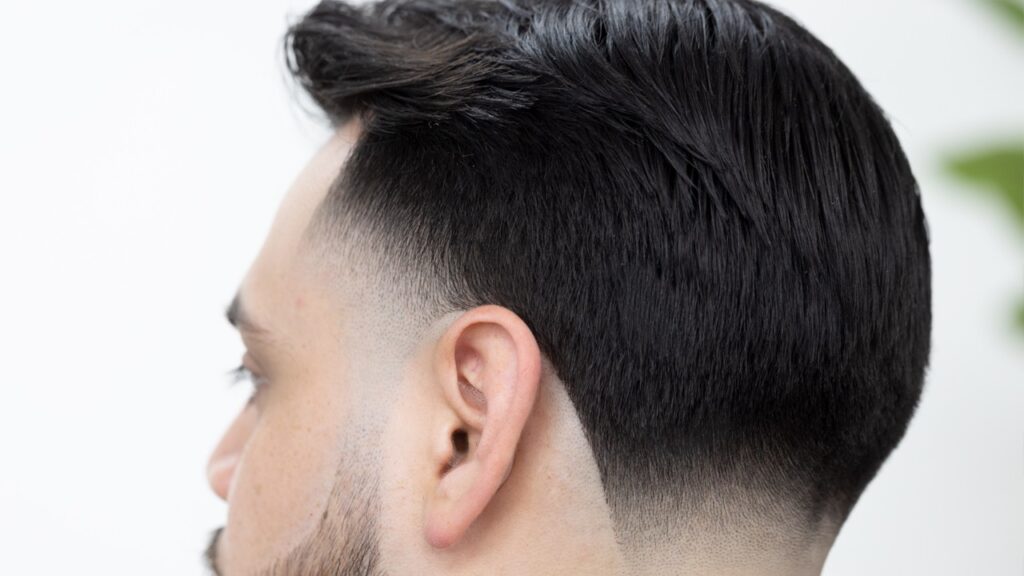
The taper fade focuses on gradual length reduction rather than dramatic contrast, creating sophisticated transitions that appear naturally flowing. This approach emphasizes subtlety and refinement, making it ideal for men who prefer understated elegance over bold statements.
Traditional barbering techniques shine in taper fades, where scissor work often supplements clipper cutting to achieve seamless blends. This combination of old-school craftsmanship with modern fade concepts creates haircuts that honor barbering heritage while meeting contemporary style expectations.
Longevity becomes a key advantage with taper fades, as the gradual transitions grow out more gracefully than dramatic fades. This means longer intervals between cuts and better appearance retention, making taper fades practical choices for men with demanding schedules or budget considerations.
The taper fade serves as an excellent introduction to fade haircuts for men transitioning from more conservative styles. The subtle nature of the blend provides fade benefits without the dramatic change that might feel overwhelming for first-time fade clients.
Drop Fade Artistry: Angular Cuts That Enhance Facial Structure 📐
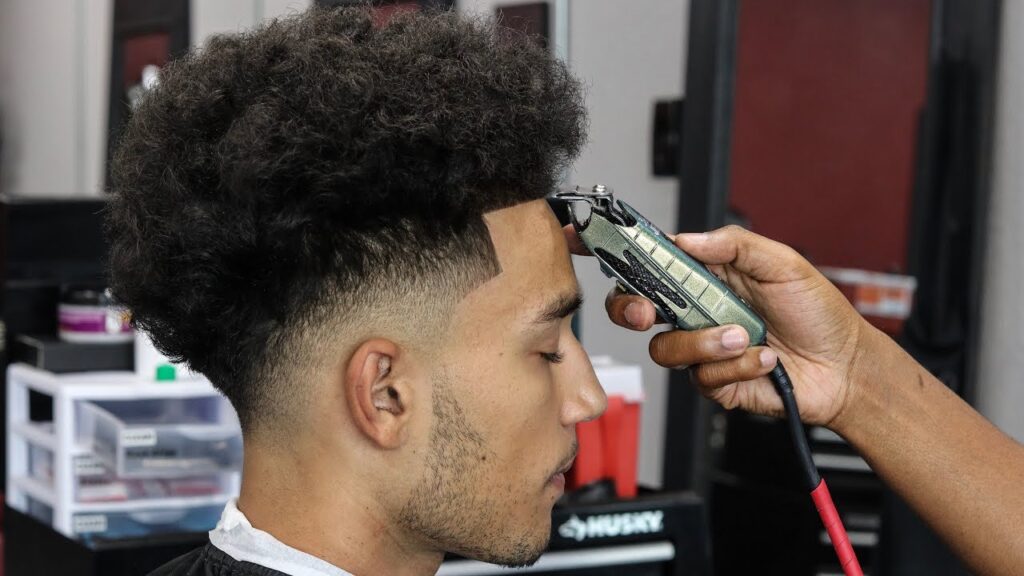
The drop fade follows the natural hairline behind the ear, creating an angular pattern that emphasizes jawline definition and facial structure. This sophisticated technique adds geometric interest while maintaining natural flow and movement.
Fashion-forward professionals choose drop fades for their architectural quality and modern aesthetic. The angular lines create visual strength that complements strong facial features while adding definition to softer face shapes through strategic contrast and shadowing effects.
Technical complexity reaches new heights with drop fades, as barbers must navigate multiple angles and transitions while maintaining consistent blend quality. This advanced technique showcases master-level skills and creates results that clearly demonstrate professional barbering expertise.
The drop fade provides excellent versatility for various hair lengths and textures, working equally well with short crops and longer styles. This adaptability makes it a valuable technique for barbers and an attractive option for clients seeking distinctive yet wearable results.
Temple Fade Precision: Focused Cuts for Refined Definition 🎯
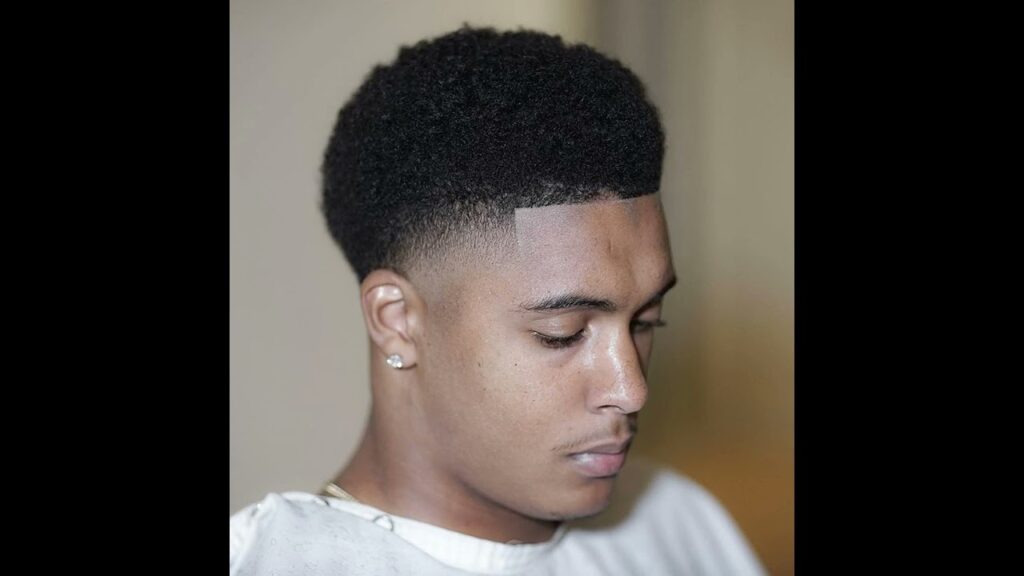
The temple fade concentrates on the areas around the temples while leaving the back and sides relatively longer. This focused approach creates targeted contrast that highlights facial features without the comprehensive commitment of full-head fades.
Mature professionals often prefer temple fades for their sophisticated subtlety and age-appropriate styling. The concentrated fade effect provides contemporary edge while maintaining the substantial coverage that many older men prefer for both aesthetic and practical reasons.
Maintenance requirements stay manageable with temple fades, as the limited fade area requires less frequent professional attention. This makes them attractive options for men seeking modern style without the intensive upkeep associated with more extensive fade cuts.
The temple fade works exceptionally well in combination with other cutting techniques, serving as an accent to traditional styles or classic cuts. This versatility allows for personalized approaches that incorporate fade elements without completely abandoning familiar styling preferences.
Classic Fade Fundamentals: Timeless Techniques That Never Go Out of Style ⏰
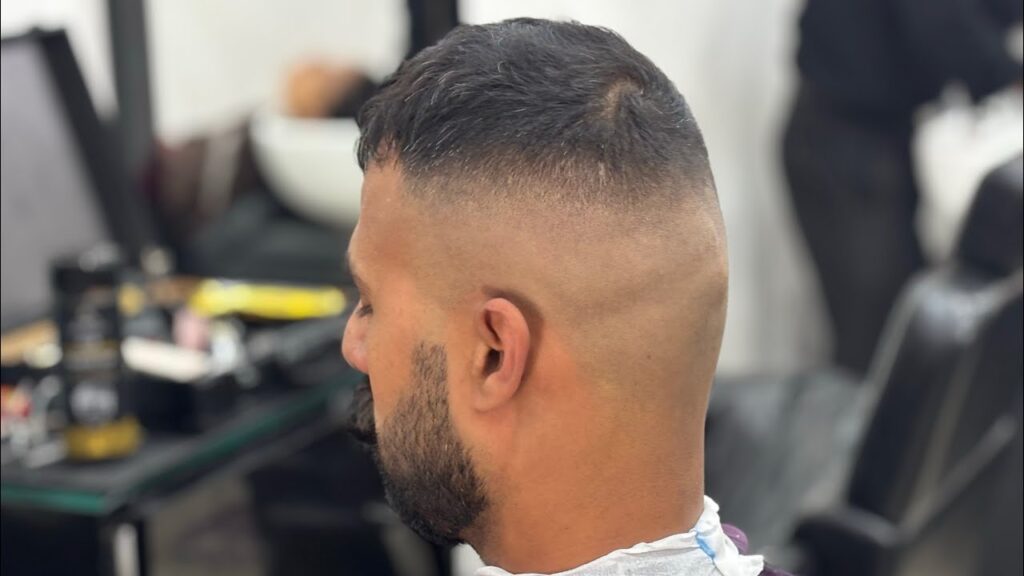
Classic fade approaches emphasize clean, straightforward transitions without elaborate patterns or extreme contrasts. These fundamental techniques form the foundation of modern fade cutting and provide reliable results that transcend seasonal trends and fashion cycles.
Traditional barbershops built their reputations on classic fade execution, where consistency and reliability matter more than innovation. These time-tested approaches continue to satisfy clients seeking dependable results that enhance their appearance without requiring constant style evolution.
Learning progression benefits significantly from classic fade mastery, as these fundamental techniques provide the skills foundation necessary for more advanced fade variations. Aspiring barbers and style-conscious men both benefit from understanding these essential approaches.
The classic fade maintains its relevance through adaptability and universal appeal. While trends come and go, the basic principles of clean transitions and proportionate balance continue to create attractive, wearable results for men of all ages and style preferences.
Modern Fade Innovations: Contemporary Twists on Traditional Techniques 🚀
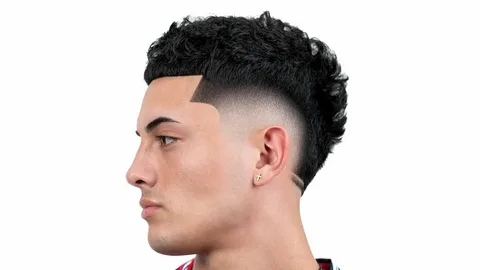
Modern fade innovations incorporate new tools, techniques, and creative approaches that push traditional boundaries while respecting fundamental barbering principles. These contemporary adaptations reflect current culture while maintaining the technical excellence that defines quality fade cutting.
Technology integration enhances modern fade execution through improved clippers, precision guards, and specialized tools designed specifically for textured hair. These advances allow barbers to achieve previously impossible results while reducing cutting time and improving consistency.
Creative expression finds new outlets through modern fade innovations, as barbers experiment with asymmetrical patterns, multiple fade levels, and artistic elements that transform haircuts into personal statements. This evolution reflects broader cultural trends toward individual expression and artistic appreciation.
Social media influence drives modern fade innovation, as viral styles and trending techniques spread rapidly through online platforms. This dynamic environment encourages experimentation and pushes both barbers and clients to explore new possibilities within the fade family.
Face Shape Optimization: Choosing Fades That Enhance Your Features 🎭
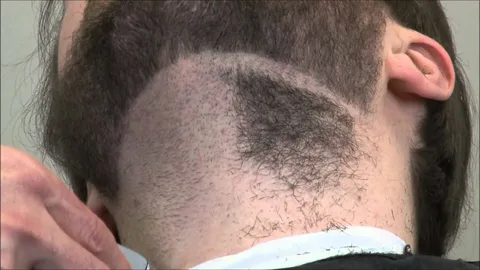
Face shape analysis forms the foundation of successful fade selection, as different fade types can dramatically enhance or detract from individual facial features. Understanding these relationships ensures optimal results that complement natural bone structure and proportions.
Round faces benefit from high fades and angular cuts that add vertical lines and create the illusion of length. The strategic removal of hair from the sides helps narrow the appearance while concentrated volume on top adds desired height and proportion.
Square faces work well with softer fade transitions and curved elements that balance strong jawlines. Burst fades and rounded transitions complement angular features while avoiding additional geometric elements that might emphasize existing sharpness.
Oval faces enjoy maximum versatility in fade selection, as their balanced proportions accommodate virtually any fade type. This flexibility allows for personal preference and lifestyle considerations to drive fade choices rather than corrective styling needs.
Long faces require careful fade placement to avoid additional lengthening effects. Low to mid fades with preserved width help maintain facial balance while avoiding high fades that might exaggerate existing length proportions.
Hair Texture Mastery: Customizing Fades for Different Curl Patterns 🌀
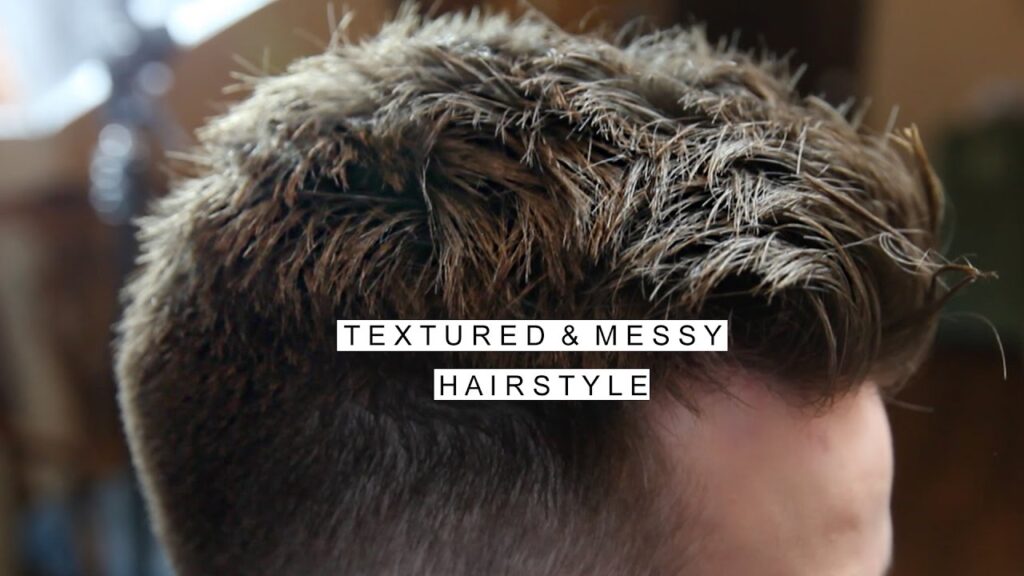
Type 1 (straight) hair requires different fade approaches than the various curl patterns common among Black men. Understanding these textural differences ensures optimal cutting techniques and realistic styling expectations for each individual hair type.
Type 2 (wavy) hair offers excellent fade versatility, as the gentle curl pattern creates natural texture without the complexity of tighter curls. This hair type responds well to most fade variations and provides forgiving maintenance characteristics.
Type 3 (curly) hair presents unique opportunities for dimensional fades, as the curl pattern creates natural volume and movement. Skilled barbers can manipulate curl direction and density to enhance fade transitions and create stunning visual effects.
Type 4 (coily) hair demands specialized techniques and tools designed specifically for its unique characteristics. The tight curl pattern requires careful stretching and precise cutting to achieve smooth fade transitions without damaging the hair structure.
Professional Styling Tips: Maintaining Your Fade Between Barbershop Visits 💼
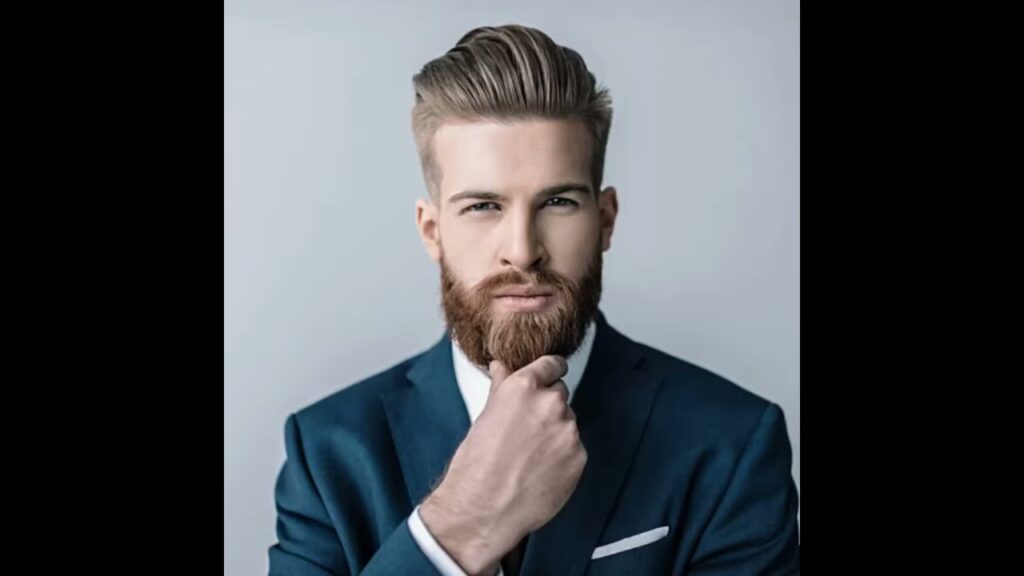
Daily maintenance routines significantly impact fade longevity and appearance quality. Establishing consistent care practices helps preserve the sharp lines and smooth transitions that define exceptional fade cuts between professional touch-ups.
Quality hair products specifically formulated for Black men’s hair provide essential support for fade maintenance. These specialized formulations address unique needs like moisture retention, curl definition, and edge control that generic products simply cannot match.
Styling tool selection influences both daily appearance and long-term hair health. Investing in appropriate brushes, combs, and styling implements designed for textured hair ensures optimal results while protecting the hair from damage and breakage.
Nighttime protection through silk or satin pillowcases and bonnets helps preserve fade shaping while preventing friction damage. These simple additions to bedtime routines can significantly extend the life of professional cuts and reduce styling time each morning.
Seasonal Fade Adaptations: Adjusting Your Cut for Weather and Occasions 🌤️
Summer considerations include heat protection and sweat management, making shorter fades and breathable styles practical choices. The increased sun exposure also requires attention to scalp protection in areas where hair coverage is minimal.
Winter styling often benefits from slightly longer fades that provide additional warmth while maintaining style integrity. The drier air can affect hair texture and moisture levels, requiring adjusted maintenance routines and product selections.
Holiday and special occasion styling may call for temporary enhancements like fresh line-ups, detailed edge work, or special occasion cuts. Planning these timing considerations ensures optimal appearance for important events and celebrations.
Workplace transitions between casual and formal requirements benefit from versatile fade selections that accommodate different styling approaches. This flexibility allows for professional adaptability without requiring frequent cut changes.
Celebrity Fade Inspirations: Iconic Looks That Define Modern Style 🌟
Hollywood influences on fade culture continue to drive trends and inspire personal style choices. Celebrity examples provide accessible inspiration while demonstrating how fade haircuts enhance overall appearance and personal branding.
Athletic professionals showcase fade versatility through their diverse style choices, from conservative cuts for formal events to bold statements for game day appearances. These high-visibility examples demonstrate fade adaptability across different contexts and occasions.
Music industry icons have historically influenced Black men’s grooming trends, with fade variations often reflecting broader cultural movements and artistic expression. These connections between music and style continue to evolve and inspire new fade innovations.
Social media personalities and influencers create new fade trends through their online presence and style experimentation. This digital influence democratizes style inspiration and provides real-time trend information for both barbers and clients.
Barber Selection Guidelines: Finding the Right Professional for Your Fade 🏆
Skill assessment techniques help identify barbers capable of executing high-quality fades consistently. Portfolio review, technique observation, and client testimonials provide valuable insights into barbering expertise and specialization areas.
Communication strategies ensure clear expectations and optimal results from barbershop visits. Bringing reference photos, discussing lifestyle requirements, and establishing maintenance schedules create partnerships that deliver consistent satisfaction.
Shop environment evaluation includes cleanliness standards, tool quality, and professional atmosphere. These factors directly impact service quality and client experience, making them important considerations in barber selection.
Relationship building with skilled barbers creates long-term benefits including style consistency, scheduling preferences, and ongoing consultation for style evolution. These professional partnerships enhance both service quality and personal satisfaction.
Advanced Fade Techniques: Pushing Creative Boundaries 🎨
Line work artistry transforms basic fades into personalized masterpieces through intricate patterns and designs. These artistic elements require advanced skills and create unique results that reflect individual personality and style preferences.
Texture manipulation techniques create visual interest and dimensional effects within fade structures. Skilled barbers use specialized tools and methods to enhance natural hair texture while maintaining fade integrity and professional appearance.
Color integration opportunities allow for dramatic customization through strategic highlighting, temporary colors, or permanent dye applications. These enhancements can emphasize fade lines or create entirely new visual effects.
Geometric patterns and cultural symbols provide meaningful personalization options that reflect heritage, interests, or artistic appreciation. These detailed elements require master-level skills and careful maintenance but create truly distinctive results.
Fade Maintenance Schedules: Keeping Your Cut Fresh 📅
Weekly touch-up options help maintain ultra-fresh appearances for high-maintenance styles like skin fades. These brief appointments focus on edge cleanup and line sharpening rather than complete re-cutting.
Bi-weekly appointments suit most fade styles and lifestyles, providing optimal balance between appearance maintenance and practical scheduling. This frequency preserves fade integrity while allowing for minor style adjustments and seasonal adaptations.
Monthly maintenance works well for lower-maintenance fade variations and budget-conscious clients. These comprehensive appointments often include style consultations and technique updates to keep looks current and fresh.
At-home maintenance techniques extend professional cut longevity through proper daily care, appropriate product use, and simple touch-up methods. These skills reduce dependence on frequent professional appointments while maintaining appearance standards.
Product Recommendations: Essential Tools for Fade Maintenance 🧴
Cleansing products specifically formulated for Black men’s hair address unique needs including moisture retention, curl pattern preservation, and scalp health. Quality shampoos and cleansing treatments form the foundation of effective home maintenance routines.
Moisturizing treatments combat dryness and promote healthy hair growth while maintaining fade appearance. These products should provide hydration without weighing down shorter fade areas or interfering with styling efforts.
Styling products including pomades, gels, and creams offer versatility for different occasions and desired finishes. Building a product collection that accommodates various styling needs ensures optimal results across different situations and preferences.
Tools and implements including quality brushes, combs, and edge tools support effective home maintenance and styling. Investing in appropriate tools designed for textured hair pays dividends in daily styling ease and appearance quality.
Troubleshooting Common Fade Issues 🔧
Uneven fade lines can result from various factors including improper technique, tool issues, or hair growth patterns. Understanding these causes helps in selecting qualified barbers and communicating specific needs and concerns.
Overgrown areas develop naturally as hair grows at different rates across the head. Recognizing when professional touch-ups are needed prevents minor issues from becoming major styling problems that require complete re-cutting.
Styling difficulties often indicate mismatched fade types for specific hair textures or face shapes. Consultation with experienced barbers can identify better fade options that provide easier maintenance and more satisfying results.
Maintenance problems frequently stem from inadequate home care routines or inappropriate product choices. Addressing these fundamental issues often resolves ongoing styling frustrations and improves overall satisfaction with fade haircuts.
Fade Evolution: From Trend to Timeless Classic 📈
Historical development of fade cutting traces back decades through Black barbering culture, military influences, and urban style evolution. Understanding this heritage provides context for contemporary fade appreciation and cultural significance.
Cultural significance extends beyond mere grooming to encompass identity expression, community connection, and artistic achievement. Fades represent cultural pride and technical mastery that deserve recognition and respect within broader style conversations.
Future trends in fade cutting continue to evolve through technological advances, cultural influences, and creative innovation. Staying informed about these developments helps both barbers and clients anticipate and adapt to changing style landscapes.
Global influence of Black men’s fade culture spreads through media, travel, and cultural exchange. This international appreciation validates the artistry and technical skill inherent in fade cutting while expanding opportunities for cultural dialogue and understanding.
Frequently Asked Questions (FAQ) ❓
Q: How often should I get my fade touched up? A: It depends on the fade type – skin fades need touch-ups every 7-10 days, while low fades can go 2-3 weeks. High-maintenance fades require more frequent visits to maintain their sharp appearance.
Q: What’s the difference between a fade and a taper? A: A fade creates more dramatic contrast with shorter lengths, while a taper provides gradual length reduction. Fades typically blend to skin level, whereas tapers maintain some hair length throughout.
Q: Can I style my fade differently for work and casual occasions? A: Absolutely! Mid and low fades offer excellent versatility – use pomade for sleek professional looks and texturizing products for casual, textured styles.
Q: Which fade works best for my face shape? A: Round faces benefit from high fades that add height, square faces look great with curved fades like burst cuts, and oval faces can wear virtually any fade style successfully.
Q: How do I maintain my fade between barbershop visits? A: Use quality moisturizing products, sleep on silk pillowcases, brush gently with appropriate tools, and avoid excessive manipulation that can disturb the fade lines.
Q: What should I tell my barber to get the fade I want? A: Bring reference photos, specify the fade height (low, mid, high), mention your lifestyle needs, and discuss maintenance preferences. Clear communication ensures better results.
Q: Are fades appropriate for professional environments? A: Yes! Low and mid fades are excellent for corporate settings, while higher fades work well in creative industries. Choose the fade level that matches your workplace culture.
Q: What products work best for textured hair fades? A: Look for products specifically formulated for Black men’s hair, including moisturizing shampoos, leave-in conditioners, and styling products that enhance your natural texture without weighing it down.
Q: Can I add designs to my fade? A: Definitely! Line work, patterns, and artistic elements can personalize your fade. Discuss design options with your barber and consider maintenance requirements for detailed work.
Q: How much should I expect to pay for a quality fade? A: Prices vary by location and barber expertise, but expect to invest in quality work. A skilled barber’s expertise is worth the cost for consistently excellent results.
Conclusion: Embracing Your Fade Journey 🎯
The fade haircut represents more than just a grooming choice – it’s a powerful form of self-expression that combines technical artistry with personal style. From the subtle sophistication of low fades to the bold statement of skin fades, these versatile cuts offer endless possibilities for men seeking to enhance their appearance and express their individuality.
Success with fade haircuts depends on understanding your unique features, lifestyle needs, and maintenance preferences. The perfect fade should complement your face shape, work with your hair texture, and fit seamlessly into your daily routine. This personalized approach ensures satisfaction and long-term success with your chosen style.


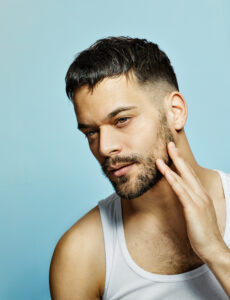
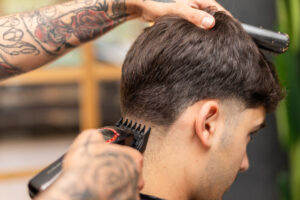

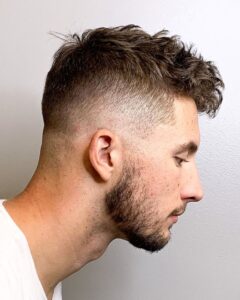
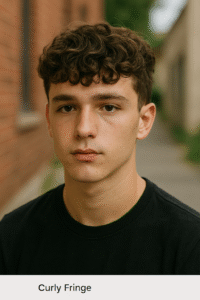
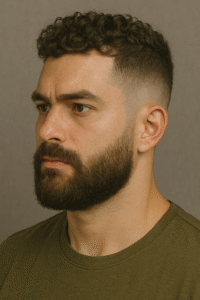
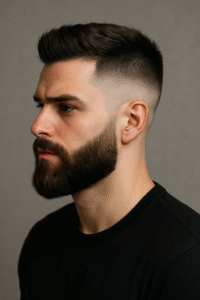
1 thought on “Ultimate Black Men Fade Haircut Lookbook: Classic to Modern Styles ✂️🔥”